Analysis of China's sewage treatment market development status
- Categories:Industry News
- Author:
- Origin:
- Time of issue:2019-04-23 13:59
- Views:0
(Summary description)On March 5, 2019, the Second Session of the Thirteenth National People’s Congress opened in the Great Hall of the People. When Premier Li Keqiang made a government work report, he reviewed the work of the past year and outlined the focus of ecological and environmental protection work in 2019. . Among them, “carrying out the improvement of rural human settlements according to local conditions, promoting the “toilet revolution”, trash and sewage treatment, and building beautiful villages” and increasing the construction of urban sewage pipe network treatment facilities are the tasks of sewage treatment in 2019.
Analysis of China's sewage treatment market development status
(Summary description)On March 5, 2019, the Second Session of the Thirteenth National People’s Congress opened in the Great Hall of the People. When Premier Li Keqiang made a government work report, he reviewed the work of the past year and outlined the focus of ecological and environmental protection work in 2019. . Among them, “carrying out the improvement of rural human settlements according to local conditions, promoting the “toilet revolution”, trash and sewage treatment, and building beautiful villages” and increasing the construction of urban sewage pipe network treatment facilities are the tasks of sewage treatment in 2019.
- Categories:Industry News
- Author:
- Origin:
- Time of issue:2019-04-23 13:59
- Views:0
On March 5, 2019, the Second Session of the Thirteenth National People’s Congress opened in the Great Hall of the People. When Premier Li Keqiang made a government work report, he reviewed the work of the past year and outlined the focus of ecological and environmental protection work in 2019. . Among them, “carrying out the improvement of rural human settlements according to local conditions, promoting the “toilet revolution”, trash and sewage treatment, and building beautiful villages” and increasing the construction of urban sewage pipe network treatment facilities are the tasks of sewage treatment in 2019.
Market investment entities are diversified, and the PPP model is gradually emerging, Recalling the development process of China's sewage treatment, from the 1960s to the 1970s, China began to invest in the construction of a batch of sewage treatment facilities and sewage treatment plants on its own. Under the planned economic system, all sewage treatment plants are state-owned institutions with poor operating capabilities. Most sewage plants are primary treatment plants, and there is an extreme shortage of sewage treatment plant operation professionals.
Since 2002, China's urban sewage treatment has developed rapidly in terms of quantity and quality. The Ministry of Construction has successively promulgated a series of related documents to provide clear policy expectations and legal guarantees for domestic and foreign investors, and stipulate codes of conduct for various entities in the urban sewage treatment market.
At the same time, the National Development and Reform Commission, the State Environmental Protection Administration and other departments have also issued relevant policy documents for the opening of urban sewage treatment market access. A large influx of foreign capital and private capital has gradually formed a diversification of investment entities such as BOT (Build-Operate-Transfer) and TOT (Transfer-Operate-Transfer) as the main body, entrusted operations, corporate equity transactions, joint ventures and cooperation. Marketization model.
China's sewage treatment market reform is advancing in the process of exploration. Since 2014, the PPP model of the sewage treatment industry has gradually emerged. This model is based on "benefit sharing, risk sharing, and long-term cooperation" to promote the government and companies in sewage treatment facilities. Infrastructure.
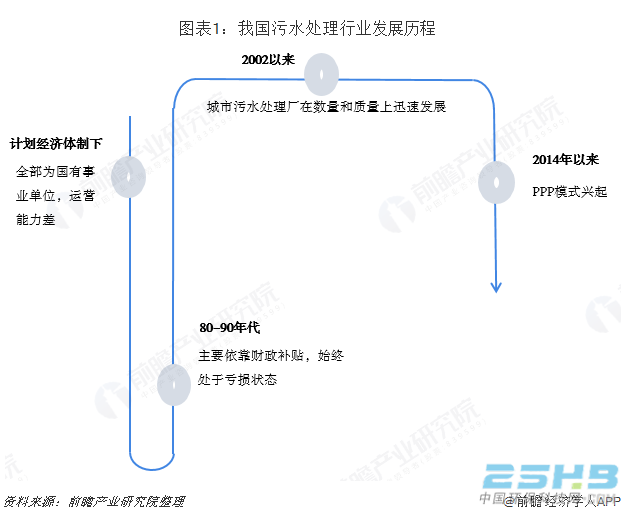
Sewage treatment capacity has been steadily improved, and cities are the main concentration areas
As of the end of 2017, there were 2,209 sewage treatment plants in cities across the country, an increase of 170 over the previous year; the daily treatment capacity of sewage plants was 157.43 million cubic meters, an increase of 5.59% over the previous year; the length of drainage pipelines was 630,300 kilometers, an increase of 9.31% over the previous year . In 2017, the total annual urban sewage treatment was 46.549 billion cubic meters, and the urban sewage treatment rate was 94.54%, an increase of 1.54% over the previous year, of which the centralized treatment rate of sewage treatment plants was 89.80%, an increase of 1.1% over the previous year. The daily production capacity of urban reclaimed water is 35.879 million cubic meters, and the amount of recycled water used is 7.134 billion cubic meters. On the whole, urban sewage treatment capacity has been steadily improved. From the perspective of sewage treatment capacity, cities are the main force in sewage treatment.
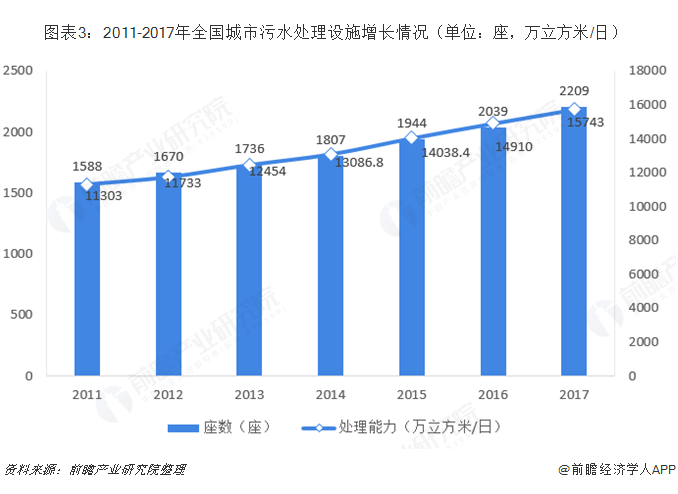
At the end of 2017, there were 1,572 sewage treatment plants in counties across the country, an increase of 59 over the previous year; the daily treatment capacity of sewage plants was 32.18 million cubic meters, an increase of 5.99% over the previous year; the length of drainage pipelines was 189,800 kilometers, an increase of 10.41% over the previous year . In 2017, the county’s annual sewage treatment volume was 8.77 billion cubic meters, and the sewage treatment rate was 90.21%, an increase of 2.83 percentage points over the previous year.
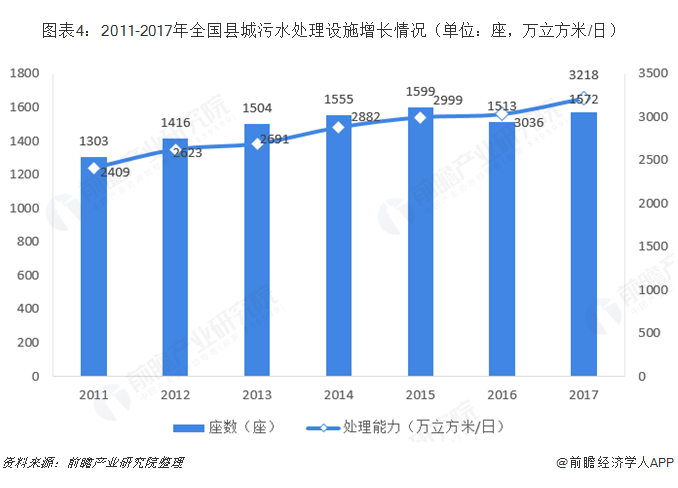
my country's sewage treatment capacity has been rapidly improved. As of the end of June 2018, a total of 5,222 urban sewage treatment plants (excluding township sewage treatment plants and industries) have been built in cities across the country, with a sewage treatment capacity of 228 million cubic meters per day.
East China has the most sewage treatment plants, and Sichuan Province ranks in the country
As of the end of 2017, a total of 8,591 sewage treatment plants have been built across the country, including 2,209 in cities, 1,572 in counties, and 4,810 in organic towns across the country. Judging from the regional distribution of national sewage treatment plants, they are mainly concentrated in East China. At the end of 2017, there were 3065 (703 cities, 332 counties, and 2030 organic towns), accounting for about 35.68% of the national sewage treatment plants; followed by In the southwest region, there were 2111 (281 cities, 286 counties, and 1544 organic towns) at the end of 2017, accounting for about 24.57% of the total number of sewage treatment plants in the country. The distribution of other regions is as follows:
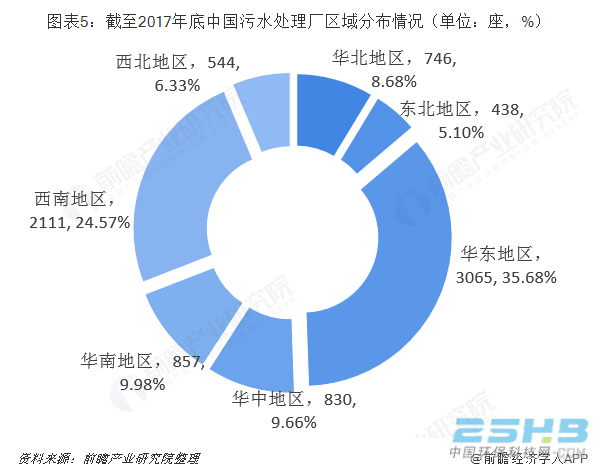
From the perspective of the distribution of sewage treatment plants in specific provinces, as of 2017, Sichuan Province has the largest number of sewage treatment plants in the country, reaching 942. Among them, there are 720 organic towns, accounting for 76.4%; Jiangsu Province and Shandong Province have 871 respectively. And 861 seats are second and third. Other areas are all below 700.
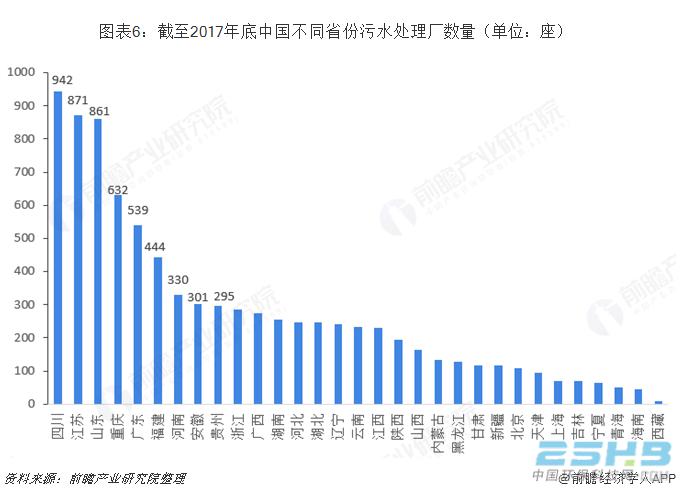
Scan the QR code to read on your phone
RECOMMENDED

Official Accounts
Contact
Tel:0573- 88898389
Fax:0573-88860388
E-mail:zyhuanbao11@163.com
Add:No.296 Huaye Road, Fengming Street, Tongxiang City
Copyright © 2021 Zhejiang Zhiyuan Environmental Technology Group Co., Ltd. All Rights Reserved








